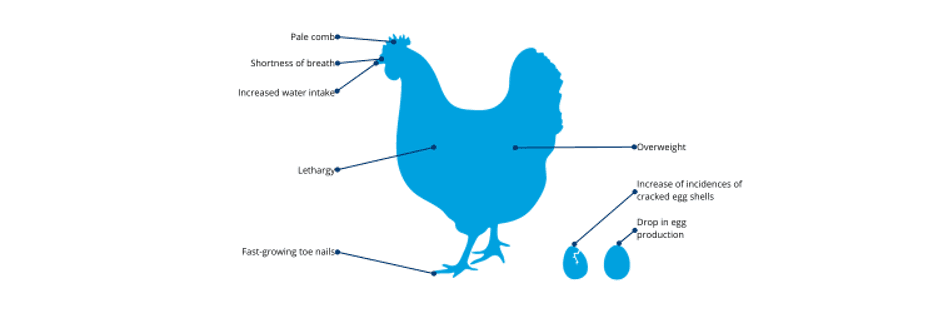


Fatty Liver Disease: Understanding, Preventing, and Managing FLHS in Laying Hens
Aug 23, 2025
Fatty liver hemorrhagic syndrome (FLHS), often referred to as fatty liver disease, is a condition that commonly affects layers. It is characterized by the excessive accumulation of fat in the liver, and its presence can significantly impact the performance of laying hens. In this blog, we will delve into the causes, clinical signs, and effective strategies to tackle FLHS, emphasizing the importance of proactive farm management practices.

Causes of FLHS
The liver plays a vital role in laying hens by converting carbohydrates into lipids essential for forming egg yolks. This process, known as lipogenesis, renders laying hens particularly susceptible to fatty liver disease. FLHS typically results from a combination of factors, including:
Dietary Factors: Diets high in carbohydrates but low in fat place added stress on the liver, as it must convert excess carbohydrates into fat.
Environmental Stressors: Various environmental factors can disrupt liver function, such as mycotoxin contamination, heat stress, hormonal imbalances, and malnutrition.
Understanding these contributing factors is crucial for managing FLHS effectively.
Clinical Signs of FLHS
Identifying FLHS in your flock is essential for timely intervention. Clinical signs of fatty liver disease include:
Visible Fatty Tissue: During an autopsy, an affected liver appears enlarged and yellowish instead of its normal dark red color.
Non-specific Symptoms: Keep an eye out for other subtle signs, such as overweight birds, pale combs with dandruff, decreased egg production, more cracked eggshells, lethargy, faster-growing toenails, increased water consumption, and shortness of breath.
Early detection can make a significant difference in the outcome.

How to Tackle Fatty Liver Disease
Once FLHS has been diagnosed on your farm, take action to mitigate and potentially reverse its effects. Consider the following measures:
Supplement Choline and Methionine: Increase choline and methionine supplementation for affected flocks. This has been shown to reduce fat accumulation in the liver.
Adjust the Diet: Modify the feed by reducing carbohydrate content while maintaining energy levels through the use of vegetable oil. This shift toward increased fat energy can alleviate the liver's burden of converting excess carbohydrates into fat for egg yolk production.
Importance of Good Management
Preventing and addressing fatty liver disease hinges on proactive farm management practices. Here is why they matter:
Routine Autopsies: Perform routine autopsies on deceased hens to detect FLHS early.
Monitor Health and Welfare: Keep a close watch on indicators, such as comb appearance, egg production, water consumption, and abnormal behavior. Early detection is key to successful intervention.
Quality Nutrition: Utilize high-quality premixes or concentrates in your feed and employ toxin binders to maintain a healthy diet.
Climate Control: Implement climate control measures to reduce heat stress among your flocks.
In conclusion, fatty liver disease is a serious concern for layer farms, but with vigilant management practices and timely interventions, its impact can be minimized. By understanding the causes, recognizing clinical signs, and adopting effective strategies, you can promote the well-being and productivity of your laying hens while safeguarding your farm's success.








